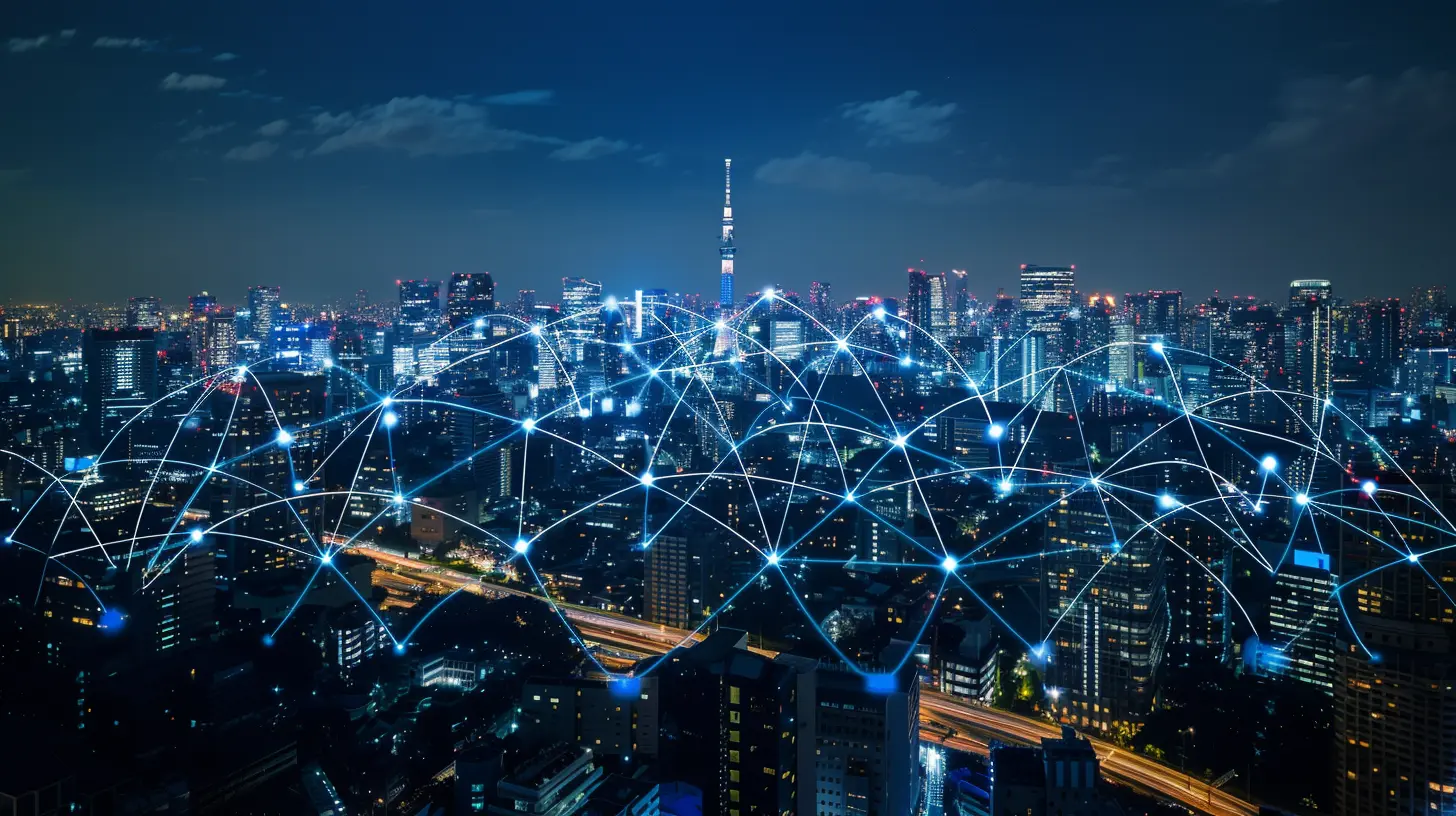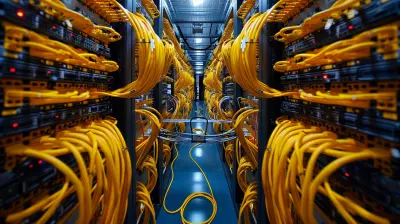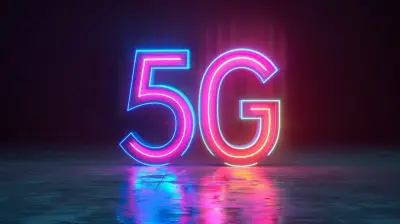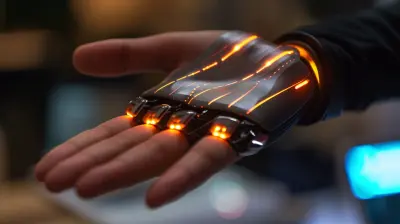The Evolution of Networking: From 3G to 5G and Beyond
8 May 2025
Technology moves at lightning speed, and nowhere is that more evident than in mobile networking. From the slow days of 3G to the ultra-fast connections of 5G, our world has transformed. But where did we start, and where are we heading? Let’s take a journey through the evolution of networking, breaking down what each generation has brought to the table and what the future holds. 
The Era of 3G: The Beginning of Mobile Internet
Before we had seamless video calls and high-speed downloads on our phones, we had 3G. The third-generation (3G) wireless networks revolutionized mobile communication when they arrived in the early 2000s.What Made 3G a Game-Changer?
Before 3G, mobile networks were primarily for calls and text messages. Internet access was painfully slow, barely enough for checking emails or loading simple web pages. Then came 3G, and suddenly:- Mobile internet became a reality.
- Web browsing, emails, and even early forms of video streaming started taking off.
- It introduced higher data speeds, reaching up to 2 Mbps—a big leap from the previous 2G networks.
However, while 3G was groundbreaking at the time, it had limitations. Downloads were slow, buffering was an everyday struggle, and apps were still basic due to limited bandwidth. 
4G: The Birth of the Streaming Era
Then came 4G, and suddenly, the internet on your phone wasn't just a convenience—it was a way of life.What Made 4G Better?
- Blazing-fast speeds: 4G networks could reach speeds of up to 100 Mbps—making video calls, online gaming, and HD streaming seamless.- Low latency: This meant fewer delays while streaming, gaming, or using cloud-based services.
- App boom: Social media platforms, streaming services, and even ride-sharing apps flourished under 4G’s capabilities.
- Reliability: 4G provided a more stable connection, eliminating the frustrating experience of dropped signals and slow loading times.
Suddenly, binge-watching your favorite shows on Netflix or playing PUBG Mobile wasn't a struggle—it was effortless. People began relying on their phones for entertainment, work, and even financial transactions.
But as more devices connected to the internet, the demand for even faster speeds and lower latency grew. And that’s where 5G stepped in. 
5G: The Dawn of Hyperconnectivity
5G isn't just an upgrade—it’s a complete transformation of mobile networks. With speeds up to 10 Gbps, it’s nearly 100 times faster than 4G.What Makes 5G Revolutionary?
- Ultra-low latency: Reducing lag to just 1 millisecond, making real-time applications (like AR, VR, and cloud gaming) flawless.- Massive device connectivity: Enables IoT (Internet of Things) devices to function without network congestion. Smart homes, connected cars, and industrial automation rely on this capability.
- 5G and AI: The combination of 5G with artificial intelligence enhances automation, smart healthcare, and personalized user experiences.
- Network slicing: This allows different industries (healthcare, automotive, gaming) to have their own dedicated 5G networks tailored to their needs.
5G doesn’t just mean faster Netflix streaming—it means self-driving cars communicating in real-time, doctors performing remote surgeries, and entire smart cities becoming reality.
But just like every revolution in tech, there’s always the next big thing on the horizon. 
Beyond 5G: What’s Next?
If 5G is already mind-blowing, what comes next? While it’s still in the research phase, future networks like 6G are already in discussion.What Will 6G Offer?
- Speeds of 100 Gbps or more: That’s 10 times faster than 5G!- Even lower latency: Making real-time applications like brain-computer interfaces possible.
- AI-driven networks: Networks will be self-learning, optimizing themselves automatically for peak performance.
- Holographic communication: Imagine calling someone, and instead of a video, a 3D hologram of them appears in your room—this could be the future of communication.
Experts believe 6G could roll out by 2030, setting the stage for even more futuristic applications. But before that, we’ll see enhanced versions of 5G, such as 5G-Advanced, which will refine and expand 5G’s capabilities.
How 5G and Future Networks Will Change Our Lives
With the advent of faster, smarter networks, our daily lives will shift dramatically. Here’s how:1. Smart Cities Will Become the Norm
Imagine cities where traffic lights adjust based on real-time traffic patterns, waste management is automated, and public transport is entirely interconnected. 5G and beyond will power these smart cities, making urban life more efficient.2. Healthcare Will Be Transformed
Remote surgeries and AI-powered diagnostics will become routine, with doctors able to operate from different continents using robotic arms controlled in real-time.3. Gaming and Entertainment Will Be Limitless
Say goodbye to downloads—games and movies will be streamed in an instant, with zero lag. Cloud gaming services like NVIDIA GeForce Now and Xbox Cloud Gaming will thrive in these high-speed environments.4. The Internet of Things (IoT) Will Expand
From smart fridges ordering groceries to self-driving cars navigating traffic perfectly, IoT devices will communicate seamlessly thanks to ultra-fast networks.5. Education Will Evolve
Virtual classrooms, 3D holographic lessons, and AI-powered tutors will become standard, making learning more interactive and accessible than ever.Conclusion: The Future is Now
The evolution from 3G to 5G and beyond has completely reshaped how we interact with technology. We’ve gone from slow web pages to instantaneous cloud computing, from pixelated video calls to real-time 4K streaming, and from simple text messages to AI-driven automation.And here’s the exciting part: we’re just getting started. With 6G on the horizon, the world will soon experience another quantum leap in connectivity. The Internet of Things, augmented reality, and even technologies we haven’t dreamed of yet will thrive in this hyperconnected future.
The only question left is: Are you ready for what’s coming next?
all images in this post were generated using AI tools
Category:
NetworkingAuthor:

Gabriel Sullivan
Discussion
rate this article
7 comments
Starla McIlroy
Great insights! Excited for the future of networking!
May 16, 2025 at 12:42 PM

Gabriel Sullivan
Thank you! I'm glad you found it insightful—exciting times ahead for networking!
Hannah McLaury
3G to 5G? Please, we’re just getting started! Buckle up, folks—networking is about to take a wild ride into the future!
May 15, 2025 at 3:35 AM

Gabriel Sullivan
Absolutely! The journey is just beginning, and the advancements ahead promise to revolutionize connectivity in unimaginable ways. Buckle up!
Liora McGonagle
From 3G’s awkward first dates to 5G’s whirlwind romance—networking really knows how to upgrade its love life!
May 14, 2025 at 3:27 AM

Gabriel Sullivan
Thanks for the clever analogy! Networking has indeed transformed dramatically, making connections faster and more exciting.
Sylas Reese
As we stand on the precipice of 5G and beyond, whispers of a hidden quantum network linger in the shadows. What if the next leap in connectivity is not just faster speeds, but a gateway to uncharted realms? The evolution of networking is only beginning, and the future is eerily unpredictable.
May 11, 2025 at 10:17 AM

Gabriel Sullivan
Thank you for your thought-provoking comment! Indeed, as we transition to 5G and beyond, the potential of quantum networking could redefine connectivity in ways we can only begin to imagine.
Camden McGovern
This article effectively highlights the rapid advancements in networking technology, illustrating the transformative impact of 3G, 4G, and 5G on communication and connectivity in our lives.
May 10, 2025 at 12:09 PM

Gabriel Sullivan
Thank you for your feedback! I'm glad you found the article informative about the transformative journey of networking technology.
Adam McKnight
Great insights on networking evolution! It's fascinating to see how far we've come with 5G technology and its potential future developments.
May 10, 2025 at 2:51 AM

Gabriel Sullivan
Thank you! I'm glad you enjoyed the insights. The evolution of networking is truly exciting, and 5G is just the beginning!
Preston McKenzie
Wow, what a journey! It's fascinating to see how networking has transformed from 3G's slow beginnings to the lightning-fast 5G. Can't wait for what comes next!
May 9, 2025 at 8:00 PM

Gabriel Sullivan
Thank you! It's amazing to witness this evolution, and the future of networking holds even more exciting possibilities!
MORE POSTS

Corsair vs. Logitech: Best Mechanical Keyboard for Productivity

The Role of Machine Learning in Detecting Cyber Threats

How to Build a Scalable Network Infrastructure for Your Business

How Serverless Architectures Impact Cloud Security

Understanding the Role of 5G in IoT Device Connectivity

How Advanced Haptics are Enhancing the Gadget Experience